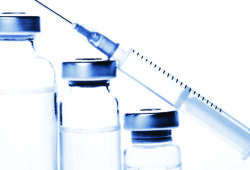Supplier consolidation, heightened FDA scrutiny, industry profit-taking, recurring shortages and a new branded market for pre-1962 DESI drugs have conspired to inflate prices on older drugs.
The rising price of generic and so-called DESI drugs are giving hospitals sticker shock, but HealthTrust’s model and contracting expertise are helping to mitigate the impact on its members.
As hospitals are well aware, pricing on many generic injectable drugs has spiked well above the bargain level that once defined them. Even the common antibiotic doxycycline hyclate now costs at least 1,000 percent more than a few years ago. This inflationary effect impacted 50 percent of all generic drugs in 2014.
There are four major reasons generic drugs have become more expensive and, short of serious regulatory or market-based intervention, are likely to continue their upward climb:
- Consolidation of suppliers, most recently Hospira with Pfizer, eliminating price competition.
- Heightened FDA scrutiny following a series of factory mishaps. Production costs for sterile injectable generics skyrocketed after the 2008 discovery of a contaminated batch of heparin that killed 80 people and mandated quality improvements at manufacturing facilities. Companies that did not consolidate to contain costs passed through the charges to customers or exited the market entirely.
- Industry profit-taking on branded medications nearing their patent expiration, diluting the savings realized when a drug goes generic.
- Recurring shortages and interruptions in the supply of both raw materials and finished product.
The situation isn’t any better with pre-1962 DESI (Drug Efficacy Study Implementation) drugs. Many DESI manufacturers dropped out of the market after the FDA made costly safety testing mandatory a decade ago. Suppliers that remained are currently enjoying what is essentially a new branded market, since no exclusivity periods are granted as a function of these approvals. Generic manufacturers can jump right in with an Abbreviated New Drug Application and, when their product hits the shelves, price it at a discount off the higher orange book reference drug.
Not all hospitals are equally impacted by these twin phenomena. HealthTrust, for instance, mitigates the impact for its members by negotiating contract terms and conditions that protect hospitals from pricing surprises and supply disruptions, and employs contract managers to ensure suppliers deliver on their promises. Because HealthTrust operates a committed model GPO, it also has the power to move market share and spur manufacturing to stabilize pricing. Costs aside, patient outcomes are the guiding light on buying decisions made by HealthTrust’s Pharmaceutical Advisory Board―which can mean higher short-term spend for better long-term results both clinically and financially.
Share Email






